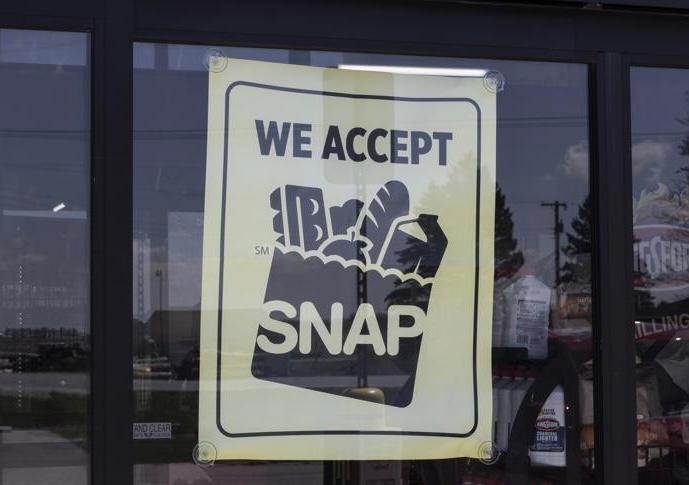
Critical Flashpoints as Work Rules Return to SNAP
- Waivers once used to protect recipients during the pandemic are now under fire, with USDA officials accusing states of abusing the system.
- Legal and compliance risks are on the rise for state agencies distributing federal aid, creating new exposure under public benefit and administrative law.
- Food insecurity, insurance instability, and the burden on safety-net systems could surge if millions lose access to their only source of food support.
By Samuel Lopez – USA Herald
The federal government has just thrown down the gauntlet to states that manage the Supplemental Nutrition Assistance Program, better known as SNAP or “food stamps.” In a forceful memorandum issued April 17, the U.S. Department of Agriculture reminded state agencies that work requirements must be enforced, not evaded. While the guidance is not a formal rule, it has the tone of a warning—and for millions of Americans who depend on SNAP, it signals a major shift.
SNAP reached more than 41 million people in 2024 alone. The program is a critical lifeline for low- and no-income households trying to afford basic groceries. But now, under the leadership of Agriculture Secretary Brooke Rollins, the USDA is accusing states of distorting the law through excessive use of work requirement waivers. According to Rollins, states have “abused the system” by shielding able-bodied adults without dependents from work expectations that are clearly outlined in federal law.
The issue revolves around so-called “work requirement waivers.” These waivers, which allow states to suspend work rules in regions of high unemployment or limited job availability, were widely used during the pandemic. At the time, they served a necessary purpose—ensuring families could continue to eat when the job market collapsed. But according to Rollins, too many states have continued to rely on these exceptions, even as employment rates recover.
Under current federal SNAP rules, recipients aged 18 to 54 must work or participate in a qualifying program for at least 80 hours per month. This includes paid work, unpaid training, or volunteer work. Those who do not comply face a strict consequence: they lose their benefits after three months and cannot reapply for three years.
Some exceptions exist. People who are pregnant, veterans, unhoused, disabled, or responsible for a child under 18 are exempt. So are young adults under 24 who were in foster care on their 18th birthday. But for everyone else, the work rule applies—and the new USDA memo makes it clear that states can no longer claim hardship exemptions without justification.
At present, six states or territories still operate under a statewide waiver. Twenty-five others have partial waivers affecting certain counties or cities. Most of these waivers last for 12 months. However, the USDA now wants stricter oversight. States will be expected to submit detailed, localized unemployment data and prove that jobs are unavailable in the regions requesting exemption. This sets up a legal dilemma: if a state fails to collect accurate data or continues to issue blanket waivers, could it be subject to federal sanctions, oversight audits, or whistleblower claims? Legal analysts say yes.
The legal exposure for state agencies is real. States that knowingly misrepresent economic conditions to preserve waivers could be found in violation of federal grant conditions. In extreme cases, this could trigger claims under the False Claims Act or expose departments to administrative litigation from watchdog groups. And for individual recipients, especially those who are unaware of the work rule changes, the risk is immediate: failure to comply may result in loss of benefits, followed by years of ineligibility.
Insurance experts are also watching closely. The reduction or revocation of food assistance for millions could have ripple effects on the private insurance market. Food insecurity is linked to increased hospitalization rates, higher incidents of chronic illness, and a spike in emergency service use. Health insurers, life insurers, and even property carriers may face new claims as financial instability grows. Hunger also places additional strain on public services such as Medicaid, emergency housing, and disaster relief—programs often supported by tax revenue and government-backed insurers.
Secretary Rollins made her intent crystal clear: “It is important to remind states that Congress conditioned the receipt of benefits by able-bodied adults without dependents on satisfying work requirements. Today marks the start of a new era for SNAP—prioritizing work, career and technical education, and volunteering rather than idleness, excess spending, and misapplication of the law.”
From a legal lens, this USDA directive may not be a binding order, but it serves as a regulatory shot across the bow. It lays the foundation for future rulemaking or enforcement actions—and invites states to either fall in line or face consequences. In the insurance space, providers should begin bracing for what happens when millions of people lose the food support that shields them from deeper financial collapse.
For now, the USDA has not announced penalties or new enforcement mechanisms. But this shift signals a new posture—one where leniency ends and legal compliance begins.
Follow us on X @RealUSAHerald
Fact-Check Sources
USDA SNAP Waivers
SNAP Statistics – USDA
Congressional Research Service – SNAP Work Requirements
Federal Register – USDA Guidance April 2025


